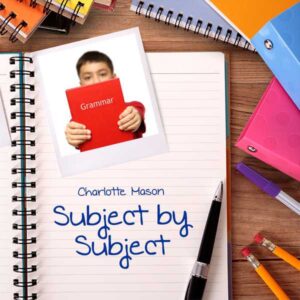Free shipping on USA orders over $129!

Most of you were probably taught English grammar the same way I was. In first grade we were told, “A noun is the name of a person, place, thing, or idea. Circle the nouns in these five sentences.”
Then in second grade we were told, “A noun is the name of a person, place, thing, or idea. Circle the nouns in these ten sentences.”
And in third grade we were told, “A noun is the name of a person, place, thing, or idea. Circle the nouns in these fifteen sentences.”
Charlotte Mason’s approach to grammar was vastly different.
The Timing
Probably the biggest difference between the way we were taught grammar and how Charlotte approached grammar is the timing. The educational system we grew up in believed that children must study parts of speech every year all year long. Charlotte did not think it would take that long for children to learn nine parts of speech.
Plus, she realized that grammar is an abstract concept. Many times you can’t say what part of speech a word is until you see where it fits in the sentence and how it relates to all the other words. That’s a tough concept for a concrete-thinking child to grasp (which may explain why the traditional educational system has to keep reteaching it year after year).
Charlotte believed you could make more progress faster if you waited until the children were older—ten or so. Up until that time they were seeing, hearing, and practicing correct usage (like proper verb tenses, simple punctuation and capitalization, proper pronouns) through their copywork, reading, and narration. That rich exposure laid the foundation for ease in analyzing the language later.
The Method
Once the children are ready, the parts of speech are introduced in a straight forward way with simple exercises. The “living” part comes in when the children are assigned to practice identifying the parts of speech and analyze the jobs they perform. Just as with handwriting and spelling, you use good literature from living books to practice grammar analysis.
For example, you could present a stanza from a poem with several words italicized and ask the children to identify what part of speech each one is. In this way you can continue to nourish their minds with great ideas even while practicing grammar.
The Using Language Well series provides short lessons in English usage and grammar pulled from the wonderful literature passages in the Spelling Wisdom books. Together, they make a rich literary approach to grammar.
Podcast: Play in new window | Download
